Dealing with pesky rabbits in your yard or garden can be frustrating. These seemingly innocent creatures can cause significant damage to plants, vegetables, and landscaping. In this comprehensive guide, I’ll review the best rabbit traps available in 2025, compare their features, and provide expert advice on how to effectively and humanely deal with rabbit problems.
Quick Picks: Best Rabbit Traps of 2025
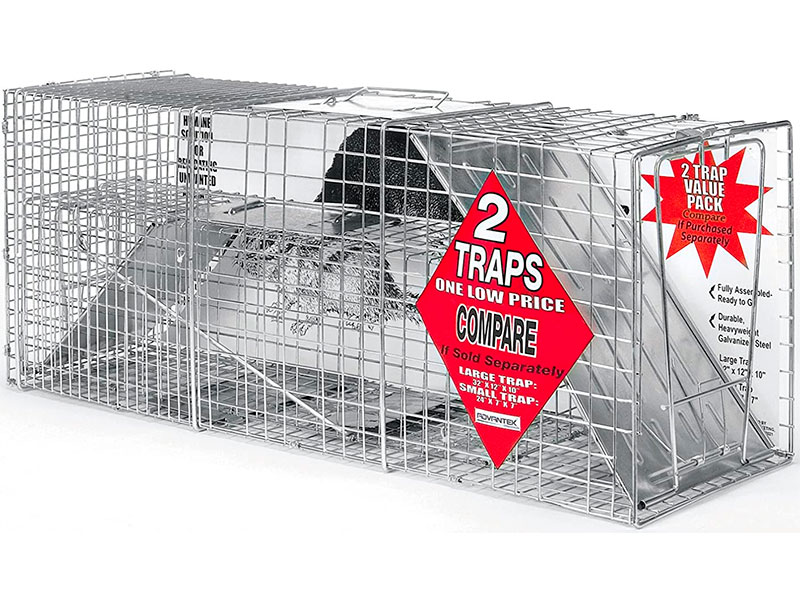
Editor’s Choice
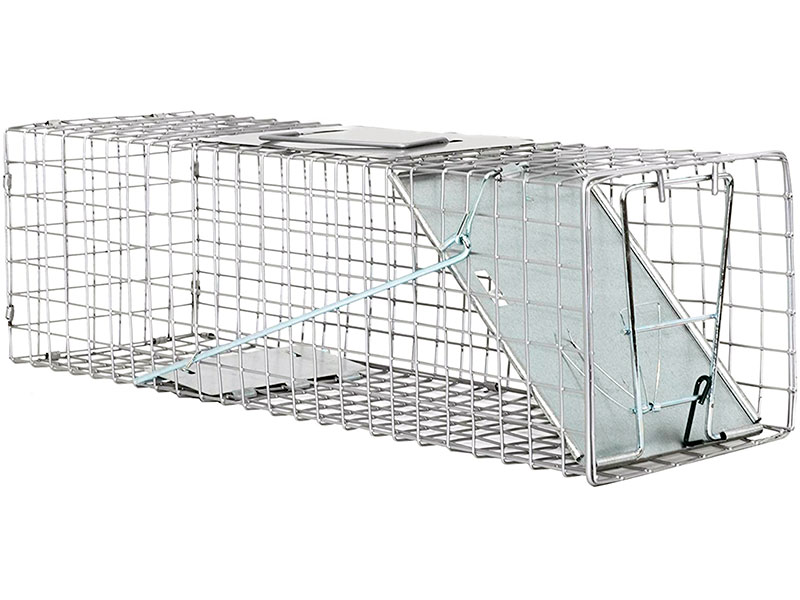
People’s Choice
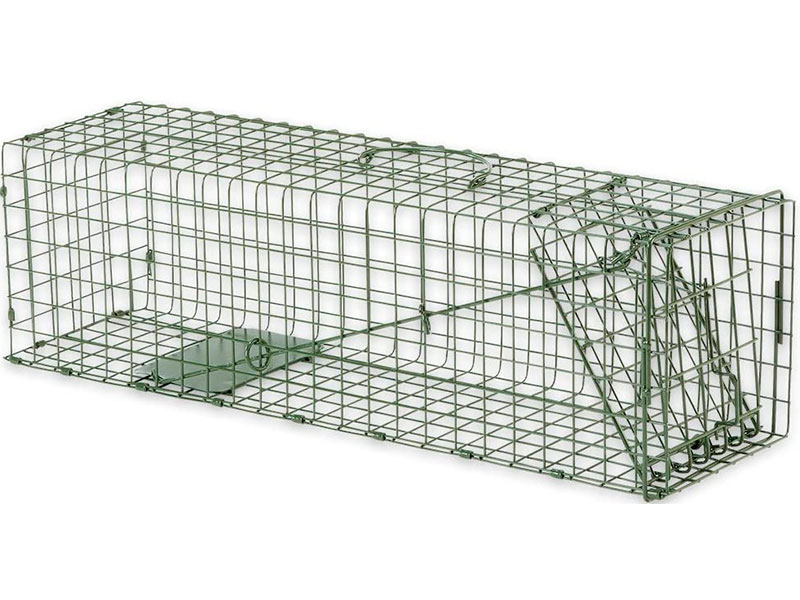
Best Budget
- 3 Best Rabbit Traps Reviewed for 2025
- What is the Best Rabbit Trap in 2025? – Your Expert Buyer’s Guide
- Types of Rabbit Traps: What to Choose
- How to Catch a Wild Rabbit Effectively
- 6 Steps to Successfully Trap Rabbits with Live Traps
- Choosing the Best Bait for Rabbit Trapping
- Alternative Rabbit Control Methods
- Legal Considerations for Rabbit Control
- Conclusion: Choosing the Best Rabbit Trap for Your Needs
- Frequently Asked Questions
3 Best Rabbit Traps Reviewed for 2025
After extensive research and hands-on testing, I’ve identified the most effective rabbit traps currently available on the market. These products offer the best combination of humane capture, ease of use, and durability.
Advantek Catch and Release Cage Trap
Editor's ChoiceHow Does It Work
How to Use
- Place the trap in areas with high rabbit activity such as near garden edges, fence lines, or where you've observed damage
- Bait the trap with fresh vegetables like carrots, lettuce, or apples
- Check the trap regularly (at least once daily) to ensure humane treatment of captured animals
- When a rabbit is caught, transport the trap to a suitable release location at least 5 miles from your property
- Wear gloves when handling the trap to protect yourself from potential bites or scratches
- Humanely traps rabbits without causing injury
- Made of durable alloy steel for long-term use
- Quick-set trap mechanism for easy setup
- Comes as a value pack with two traps of different sizes
- Safe for both the animal and handler
- Requires regular monitoring to prevent animals from being trapped for extended periods
- Rabbits can potentially chew through wire mesh if left in the trap too long
- May catch non-target animals if not properly positioned
LifeSupplyUSA Medium Animal Trap
People's ChoiceHow Does It Work
How to Use
- Position the trap in areas where rabbit activity has been observed
- Place appropriate bait inside the trap (carrots, lettuce, apples work well)
- Sprinkle some bait around the entrance to encourage rabbits to approach
- Once a rabbit enters the trap, it will step on the pedal that triggers the door to close
- The gravity-action lock will secure the door, preventing escape
- When ready to release, simply hold down the release lever and open the door
- Safe and easy to use, even for beginners
- Durable construction with rust-resistant coating
- Portable design for convenient placement and transport
- Sensitive trigger mechanism for reliable captures
- Humane design protects animals from injury
- Bait alone may not always be sufficient to lure cautious rabbits
- Door mechanism can occasionally close prematurely if not set properly
- Single-door design may be less effective than dual-door models in some situations
Duke Rabbit Cage Trap
Best BudgetHow Does It Work
How to Use
- Place the trap in areas with evidence of rabbit activity
- Bait the trap with appropriate food to attract rabbits
- Position the trap along natural pathways rabbits use to travel
- Check the trap at least once daily
- Wear gloves when handling trapped animals
- Transport and release captured rabbits in appropriate areas
- Extremely cost-effective solution for rabbit problems
- Sturdy, reliable steel construction
- Spring-loaded door for quick and secure capture
- Sensitive pressure plate trigger mechanism
- Camouflaged design helps avoid detection by wary rabbits
- Can be more challenging to set up correctly than premium models
- May not be as durable as higher-priced alternatives
- Smaller size may not be suitable for larger rabbit species
What is the Best Rabbit Trap in 2025? – Your Expert Buyer’s Guide
Rabbits can quickly transform from cute wildlife to serious garden pests when they start feasting on your vegetables, flowers, and landscaping. Effective trapping is one of the most reliable methods to control rabbit populations on your property.
Humane Traps
Live cage traps that allow for catch-and-release are the most widely recommended option for homeowners. These traps capture rabbits without injury so they can be relocated safely.
Lethal Options
While lethal traps exist, they often require special permits and should only be considered as a last resort when other methods have failed or in cases of severe infestation.
Trap Selection
The right trap depends on your specific situation, including the size of your rabbit problem, your local regulations, and your personal preference regarding humane control methods.
Types of Rabbit Traps: What to Choose
The market offers several types of rabbit traps, each with its own advantages and limitations. Understanding the differences will help you select the best option for your specific situation.
| Trap Type | Description | Best For |
|---|---|---|
| Live/Humane Traps | Cage-style traps that capture rabbits without harm for later release. Most popular among homeowners. | Residential areas, those who prefer non-lethal methods, areas with regulations against killing wildlife. |
| One-Door Traps | Features a single entrance with a trigger mechanism that closes the door once the rabbit enters. | Areas where rabbits follow predictable paths, limited space applications. |
| Two-Door Traps | Traps with entrances at both ends, increasing the likelihood of capture as rabbits see a clear path through. | Placing along rabbit trails, capturing particularly cautious rabbits. |
| Collapsible Traps | Designed to fold flat when not in use, saving storage space but providing full functionality when needed. | Limited storage space, seasonal rabbit problems, transportability. |
| Lethal Traps | Designed to kill rabbits immediately. Includes body-grip traps that require proper licensing in many areas. | Severe infestations when humane methods have failed (requires appropriate permits). |
How to Catch a Wild Rabbit Effectively
Successful rabbit trapping requires more than just setting a trap and hoping for the best. Here are proven strategies to increase your chances of capturing problematic rabbits:

Rabbit tracks: 5 toes (front) and 4 toes (back)

Characteristic rabbit damage to garden plants
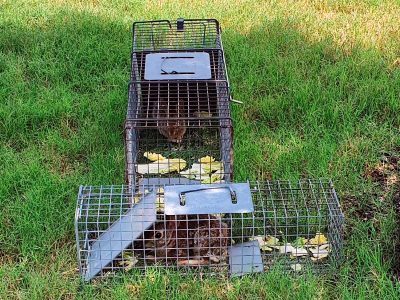
Optimal trap placement along natural rabbit paths
Identify Rabbit Activity
Before setting traps, confirm that rabbits are indeed your problem. Look for these signs:
- Tracks and Droppings Rabbit tracks have 5 toes on front paws and 4 on hind paws. Droppings are small, round pellets.
- Feeding Damage Clean-cut damage to plants about 2 inches above ground level is characteristic of rabbit feeding.
- Runways Look for well-worn paths through grass or snow, often leading to and from cover.
Choose the Right Trap
Select a trap appropriate for your situation:
- For residential areas, humane live traps are typically best
- Two-door traps work well when placed on established rabbit paths
- For limited storage space, consider collapsible models
- Size matters—ensure your trap is appropriate for local rabbit species
6 Steps to Successfully Trap Rabbits with Live Traps

Follow this proven step-by-step process to maximize your rabbit trapping success:
Step 1: Choose the Right Trap
Select a trap designed specifically for rabbits. One-door traditional traps work well in most situations, while two-door models offer greater versatility for placement along rabbit pathways.
Step 2: Identify the Perfect Trap Location
Place traps in areas with high rabbit activity. Optimal locations include:
- Transitional areas between open spaces and cover
- Along fence lines and shrub borders
- Near areas with visible rabbit damage
- Along established rabbit runways
- Near brush piles, tall grass, or other shelter
Step 3: Select Effective Bait
Choose bait that will attract rabbits while accounting for seasonal preferences:
| Season | Recommended Baits | Notes |
|---|---|---|
| Spring/Summer | Fresh vegetables (carrots, lettuce), fruits, tender plant shoots | Use the plants rabbits are damaging in your garden as bait |
| Fall | Apples, carrots, leafy greens | Root vegetables become more attractive as other food sources diminish |
| Winter | Dehydrated apples, alfalfa, dried vegetables | Avoid baits with high water content that will freeze |
Step 4: Set the Trap Properly
Follow the manufacturer’s instructions for your specific trap model. Generally:
- Ensure the trap is on flat, stable ground
- Position the trigger mechanism properly
- Place bait at the far end of the trap, behind the trigger plate
- Test the trigger sensitivity with a stick before leaving the trap
Step 5: Monitor Traps Frequently
Check traps at least once daily, preferably morning and evening. This is crucial for:
- Humane treatment of captured animals
- Releasing non-target animals promptly
- Preventing injury to trapped rabbits
- Complying with animal welfare regulations
Step 6: Relocate Captured Rabbits Safely
Once a rabbit is captured:
- Wear thick gloves to prevent bites and scratches
- Cover the trap with a light cloth to calm the rabbit during transport
- Relocate to an appropriate natural habitat at least 5 miles from your property
- Choose areas with adequate shelter, water, and food sources
- Open the trap door and allow the rabbit to leave at its own pace
Choosing the Best Bait for Rabbit Trapping

The right bait can significantly increase your trapping success. Rabbits are selective herbivores with seasonal preferences, so adjusting your bait accordingly is important.
Top Rabbit Baits by Effectiveness
- Fresh carrots – The classic rabbit bait, highly effective year-round
- Apple slices – Sweet scent attracts rabbits from a distance
- Leafy greens – Lettuce, cabbage, and other greens work well in warmer months
- Alfalfa – Particularly effective in winter when fresh vegetation is scarce
- Brussels sprouts – Strong aroma helps draw rabbits to traps
Expert Baiting Tips
- Use rabbit-damaged plants from your garden as bait—rabbits clearly already find them appealing
- Place small pieces of bait leading into the trap in addition to the main bait inside
- Spray apple cider around and inside the trap to mask human scent
- Replace bait daily to ensure freshness and maximum attractiveness
- In winter, use dried or dehydrated baits that won’t freeze
Alternative Rabbit Control Methods
While trapping is highly effective, a comprehensive rabbit management plan often combines multiple approaches:
Exclusion Methods
Physical barriers can prevent rabbits from accessing vulnerable areas:
- Install rabbit-proof fencing (at least 2 feet high, buried 6 inches underground)
- Use tree guards to protect young trees and shrubs
- Apply hardware cloth around valuable plants
Habitat Modification
Making your property less attractive to rabbits:
- Remove brush piles, tall grass, and other shelter
- Keep grass mowed short, especially near gardens
- Trim lower branches of shrubs to eliminate hiding spots
- Clear debris from along fences and structures
Repellents
Chemical and natural deterrents that discourage rabbit activity:
- Commercial rabbit repellents (typically contain predator urine or other scent deterrents)
- Homemade solutions (garlic, hot pepper, blood meal)
- Ultrasonic devices (effectiveness varies widely)
Legal Considerations for Rabbit Control
Before implementing any rabbit control program, it’s essential to understand the legal requirements in your area:
- Many jurisdictions have specific regulations regarding wildlife trapping
- Some areas require permits for relocating wild animals
- Lethal control methods are often strictly regulated or prohibited in residential areas
- There may be seasonal restrictions during breeding periods
Conclusion: Choosing the Best Rabbit Trap for Your Needs
Selecting the right rabbit trap depends on your specific situation, budget, and preferences regarding humane control. Consider these key factors when making your decision:
- For most homeowners, humane live traps like the Advantek Catch and Release model offer the best combination of effectiveness and ethical treatment
- If storage space is limited, collapsible traps provide convenience without sacrificing functionality
- Budget-conscious shoppers can find effective options like the Duke Rabbit Cage Trap that won’t break the bank
- For persistent rabbit problems, consider investing in multiple traps of different styles to increase success rates
Remember that successful rabbit control often requires persistence and a combination of methods. Trapping alone may not solve the problem permanently, especially in areas with high rabbit populations. Implement preventive measures after removing rabbits to discourage new animals from taking their place.
Frequently Asked Questions
How do I make a homemade rabbit trap?
While DIY rabbit traps are possible to construct using materials like wire mesh, wooden frames, and door mechanisms, commercially manufactured traps are typically more reliable, effective, and humane. They’re specifically designed with proper dimensions, sensitive triggers, and secure doors to ensure successful and safe capture.
If you’re on a tight budget, consider the Duke Rabbit Cage Trap, which offers professional-quality design at an affordable price point.
Where should I place rabbit traps for best results?
Place rabbit traps in areas with high rabbit activity, such as along existing rabbit runways, near damaged plants, or in transitional areas between open spaces and cover. Look for spots where you’ve seen rabbits or observed signs like droppings, tracks, or feeding damage.
Position traps along fence lines, near brush piles, or alongside hedges where rabbits naturally travel. For best results, place the trap on level ground and camouflage it lightly with natural materials like grass or leaves without interfering with the door mechanism.
What’s the best bait to use in rabbit traps?
The most effective baits for rabbits include fresh carrots, apple slices, leafy greens, and alfalfa. In warmer months, fresh vegetables and fruits work best, while in winter, dried options like dehydrated apples prevent freezing issues.
For particularly stubborn rabbits, try using the same plants they’ve been damaging in your garden as bait, since they’ve already shown preference for these. Apple cider spray can also help mask human scent and attract rabbits to the trap.
How far away should I release trapped rabbits?
Release captured rabbits at least 5 miles from your property to prevent them from returning. Choose a suitable habitat with adequate natural food sources, water, and shelter, preferably in a rural area where the rabbits won’t become someone else’s problem.
Before relocating wildlife, check your local regulations, as some jurisdictions restrict or prohibit the relocation of wild animals or require special permits.
Are lethal rabbit traps legal to use?
The legality of lethal rabbit traps varies significantly by location. Many urban and suburban areas prohibit lethal trapping entirely, while rural areas may allow it with proper licensing or permits. Bodygrip traps and snares typically face the strictest regulations.
Before using any lethal control method, contact your local wildlife agency or agricultural extension office to understand the specific regulations in your area. Even where legal, humane alternatives are generally recommended for homeowners.
How often should I check rabbit traps?
Check rabbit traps at least once daily, preferably in both morning and evening. Regular monitoring is essential for humane treatment of captured animals and to comply with animal welfare regulations in many jurisdictions.
During extreme weather conditions (very hot, cold, or wet), check traps more frequently to prevent unnecessary suffering of trapped animals. Never leave traps unattended for extended periods, as this can result in dehydration, starvation, or death of captured rabbits.
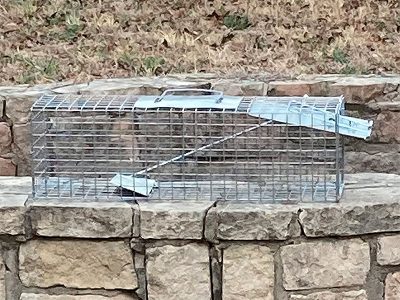
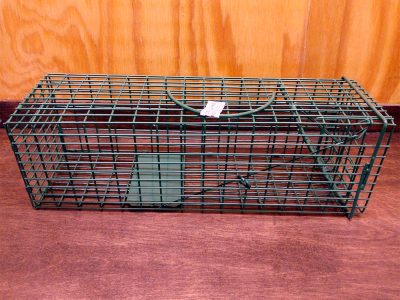



How can I order the Pindone poison to kill the rabbits in my garden
i have a rabbit that has the snuffles and i need to kill it so it doesnt spread to my whole rabbitry, i show rabbits and do not want to kill it with a trap, gun, knife etc. so i would like to use poison but not sure what kind would be best, and quickest one to use. and also where i would be able to purchase this poison.
Grab it by the neck and body. Give a quick snap with your hand around its neck away from its body. Quick, painless, and convenient. It’s what we do for our snake’s food.